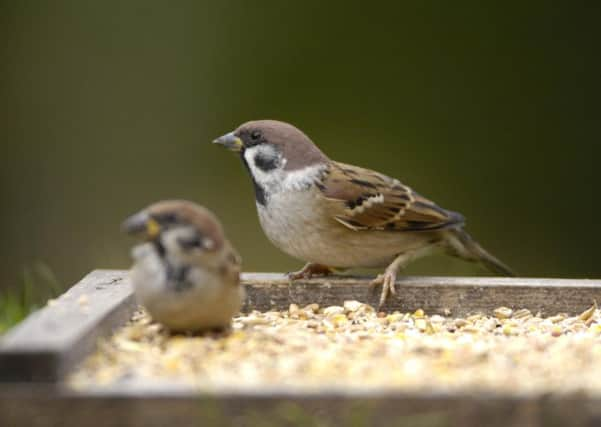Country & Coast: Forgotten but elegant bird makes jaws drop in big flocks


This certainly seems to be true in the eyes of many birdwatchers, who find themselves drawn to our most charismatic species but tend to be less diligent in looking for more ordinary-looking birds. Which is probably why few people announce that the object of their day’s birding is to go out and find a tree sparrow.
It perhaps suffers from being tarred with the same feather, as it were, of its much more widespread sibling, the house sparrow. Yet the tree sparrow is undeniably elegant, and a clue to the bird’s charm can be found in its old Yorkshire name of red-headed sparrow.
Advertisement
Hide AdAdvertisement
Hide AdActually, the head is more of a chocolate-brown colour than red, but in bright sunlight it acquires a gorgeous russety sheen. And whereas the female house sparrow’s dull brown makes it one of the least attractive birds in Britain, both sexes of the tree sparrow share their beauty.
Sadly, though, the species has declined across many parts of Britain, including Yorkshire. There was a massive population crash in the UK from the 1970s until a decade ago, when measures to help it breed slowly began to pay off, but it is still a long way from safety and is a red-listed species of conservation concern.
In Yorkshire, the chances of seeing a tree sparrow seem to increase the further east you travel. The coastal strip from Teesside down to Spurn is still where the most observations are recorded. I have often seen it at Filey Dams Nature Reserve, and last summer enjoyed watching a fair number of them above South Landing at Flamborough Head.
The bird’s presence in most areas is confined to the breeding season, and many birds congregate in large flocks on farmland or on the coast through autumn and winter. There is some to-ing and fro-ing to the Continent, and I’ve seen a report of them suddenly descending on the decks of a ship 60 miles offshore. Some flocks recorded at Spurn are spectacular, with hundreds counted every day in September and October - one year the count approached 5,000.
Advertisement
Hide AdAdvertisement
Hide AdIn the Dales there are long-established tree sparrow communities, and I’ve been lucky enough to find it several times in Upper Wharfedale. But there, as elsewhere, its numbers have been in long-term decline, and so it is heartening to hear that the Yorkshire Dales National Park has won a £9,500 grant from the Heritage Lottery Fund to help the species recover. The money will be used to find where tree sparrows are currently present, help them breed by providing nest boxes and take measures to protect breeding sites.